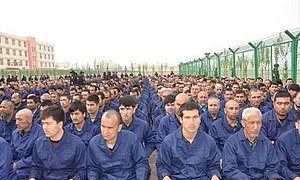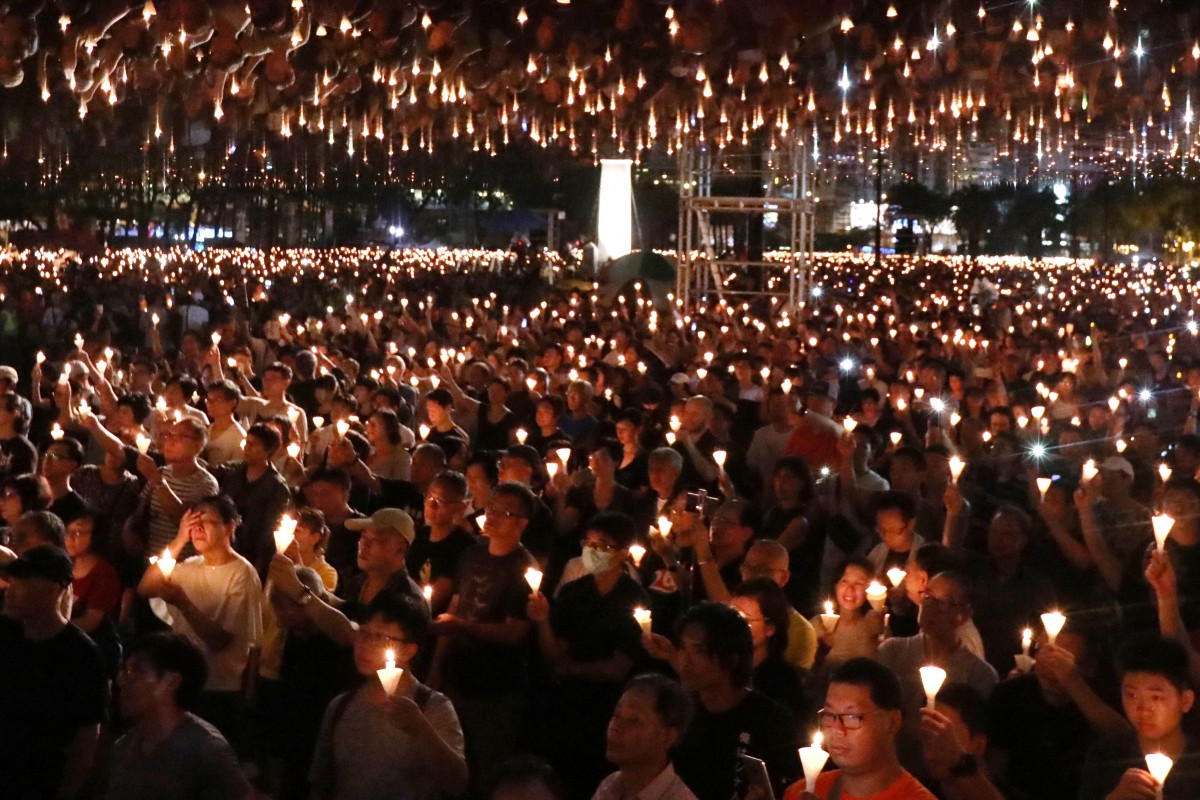In another article in this blog I tied vandalism committed by radicals in the protest movement to an escalating spiral of violent behavior which primarily has been driven by the Hong Kong police force. But there’s a lot more to this story. Personally, I cannot support neither violence nor destruction of property. Nevertheless, in order to understand that such actions are taken, seemingly with an increased frequency, it is necessary to frame this story in a proper context as I understand it to be seen by the people of Hong Kong, particularly the young generation.
The Umbrella movement
 As a start, let’s take a closer look at the 2014 Umbrella movement. The movement was a reaction to the process defined by the mainland authorities for the 2017 selection of the office of the Chief Executive. The Umbrella movement sought to implement democratic procedures for this change of leadership. To gain traction for their cause, the movement initiated protests in the shape of civil disobedience by bringing traffic to a halt in central parts of Hong Kong, as in the Occupy Central with Love and Peace campaign. As this name implies the Umbrella movement was essentially non-violent, although a few skirmishes between protesters and police did occur. The movement was brought to an end when court orders for the removal of protesters were issued after a few months with occupations in the streets of Hong Kong.
As a start, let’s take a closer look at the 2014 Umbrella movement. The movement was a reaction to the process defined by the mainland authorities for the 2017 selection of the office of the Chief Executive. The Umbrella movement sought to implement democratic procedures for this change of leadership. To gain traction for their cause, the movement initiated protests in the shape of civil disobedience by bringing traffic to a halt in central parts of Hong Kong, as in the Occupy Central with Love and Peace campaign. As this name implies the Umbrella movement was essentially non-violent, although a few skirmishes between protesters and police did occur. The movement was brought to an end when court orders for the removal of protesters were issued after a few months with occupations in the streets of Hong Kong.
None of the demands of the Umbrella movement were met by the authorities, so for many the movement has been seen as having failed. However, the movement brought together a large number of people who yearns for democratic reforms as being stipulated in Hong Kong’s Basic Law. Some leaders of the Umbrella movement took part in a televised debate with government representatives, but the attempt for dialogue came to naught. Several of the movement’s leaders subsequently received sentencing for their roles, some sentences were made as late as in April of this year. All this experience has formed the foundation for the present protests’ strategy of a leaderless movement. Love and peace was not a winning approach in 2014; today’s protesters have adopted a policy of not voicing criticism of other participants despite the contrasting means applied among different protest sub-groups. The static actions in 2014 with lasting occupations in a few selected spots have been replaced by a «blossom everywhere»-tactic in which mass rallies are supplemented by smaller pickets that emerge nearly spontaneously all across Hong Kong.
Xinjiang
 In order to understand why many in Hong Kong look to the future with a sense of deep concern, we should consider developments elsewhere in China. Lately changes that are unfolding in the province of Xinjiang (East Turkestan) in northwestern China are particularly worrying. The population in Xinjiang is composed of many ethnic groups, the largest groups are the Uyghurs and the Han Chinese (the majority population in China). In recent decades Xinjiang has seen the rise of a separatist movement that includes elements of radical Islam. Occasional terror attacks have taken place, and there have been clashes between separatists and government forces.
In order to understand why many in Hong Kong look to the future with a sense of deep concern, we should consider developments elsewhere in China. Lately changes that are unfolding in the province of Xinjiang (East Turkestan) in northwestern China are particularly worrying. The population in Xinjiang is composed of many ethnic groups, the largest groups are the Uyghurs and the Han Chinese (the majority population in China). In recent decades Xinjiang has seen the rise of a separatist movement that includes elements of radical Islam. Occasional terror attacks have taken place, and there have been clashes between separatists and government forces.
President Xi Jinping visited Xinjiang in 2014. Shortly thereafter there was a bomb attack in a railway station in the regional capital of Ürümqi which left 3 persons dead and 79 injured. This incident became a pretext for a campaign in which Chinese authorities rounded up scores of members of the Uyghur population and several minority populations like Kazakhs and Kyrgyzs. They were interned in so-called “re-education camps”, which in reality is a present day version of concentration camps. About one million are locked up for the purpose of being forcefully assimilated to the Chinese way of life. Children of the interned from the age of 7 (possibly younger) have been separated from their parents without consent and sent to orphanages rather than being taken care of by other family members.
 Such arrangements are obviously completely without proportionality given that this is happening in response to sporadic acts of terror committed by very few people. It doesn’t take much to become one of the interned; having relatives in countries like Turkey and Kazakhstan can be all it takes to become a «suspected terrorist». Those who don’t show satisfactory progress in the process of being brainwashed become subjected to food deprivation, solitary confinement, beatings and verbal abuse, and use of restraints.
Such arrangements are obviously completely without proportionality given that this is happening in response to sporadic acts of terror committed by very few people. It doesn’t take much to become one of the interned; having relatives in countries like Turkey and Kazakhstan can be all it takes to become a «suspected terrorist». Those who don’t show satisfactory progress in the process of being brainwashed become subjected to food deprivation, solitary confinement, beatings and verbal abuse, and use of restraints.
Xinjiang is a closed society, and probably there is a lot of information about what is happening inside the camps that is being kept from the rest of the world. Nevertheless, a recent testimony from a Kazakh now residing in Sweden suggests that the conditions in the concentration camps are even worse than what was previously known. According to this former detainee inmates receive punishment in the form of finger nails being pulled, forced medication, sterilization and rape.
Moreover, outside of the concentration camps a massive surveillance system has been implemented in order to monitor Uyghurs: video surveillance using facial recognition software has been set up, and signs with QR codes have been installed on the facades of the Uyghurs’ homes, giving police access to biometric data and voice samples. The Uyghurs are presently faced with a Chinese style of ethnic cleansing, in which expulsion has been replaced by the most barbaric assimilation the world has seen in recent decades.
As the amount of what was initially fragmented information on the developments in Xinjiang is increasing in volume NGOs like Amnesty International and Human Rights Watch are able to piece together a deeply troubling story of the state of the Uyghurs and minority populations. In July this year representatives from 22 countries in the UN signed a document which demands that China complies with international obligations and basic human rights in Xinjiang, and that China allows access to Xinjiang for independent international observers. Unfortunately, China’s reaction to the document shows that it has no intention of meeting any of the demands. Norway was among the 22 signatories, perhaps we can hope that this marks a first step away from the infamous statement on normalization of bilateral relations between Norway and China.
President Xi
 During 15 years starting in the mid-1950s chairman Mao’s China was on a path to an ever-growing state of misery, with Mao submerged in a personality cult and with the support of his de facto personal army during the cultural revolution, the fanatic Red Guards. The painful experience from mass incarcerations during the Anti Rightist Movement, from the Great Leap Forward with great famine, and from the Cultural Revolution with forced proletarianization of academics, chaos reigning, and vandalization of China’s rich cultural heritage, all made the communist party implement reforms of the distribution of power in the 1980s. An important element of these reforms was the term limit to a maximum of two 5-year periods for the office of the president of China.
During 15 years starting in the mid-1950s chairman Mao’s China was on a path to an ever-growing state of misery, with Mao submerged in a personality cult and with the support of his de facto personal army during the cultural revolution, the fanatic Red Guards. The painful experience from mass incarcerations during the Anti Rightist Movement, from the Great Leap Forward with great famine, and from the Cultural Revolution with forced proletarianization of academics, chaos reigning, and vandalization of China’s rich cultural heritage, all made the communist party implement reforms of the distribution of power in the 1980s. An important element of these reforms was the term limit to a maximum of two 5-year periods for the office of the president of China.
Xi Jinping assumed the office of president of China in 2013. He is also serving as General Secretary of the Communist Party, and as Chairman of the Central Military Commission. At the closing of the 19th National Congress of the communist Party in 2017 Xi’s ideology was incorporated into the party’s constitution. Only one former leader has had his ideology incorporated into the constitution while in office: Mao. In 2018, when Xi’s first five-year term as president was coming to an end, the term limit was revoked. The other two offices Xi holds have no term limits, but in recent decades these offices have been linked to the presidency, thus implicitly term limits have been in place. Without a term limit Xi may have secured the three offices indefinitely. If Xi, now 66, is not successfully challenged we should expect him to remain in power for the next 15 years, possibly longer. (Former president Jiang Zemin has now reached the age of 93.)
The atrocities towards Uyghurs and other minorities in Xinjiang was initiated under the rule of Xi in 2014, and now, still under Xi, they appear to be taking place with an increasing ferocity. During a state visit to Nepal in October, Xi issued a warning that Chinese separatists «will perish, with their bodies smashed and bones ground to powder». Xi now has a position as China’s leader that is unmatched since Mao’s rule came to an end. Furthermore, the tenure of Xi has seen a return to a cult of personality which is unparalleled in the post-Mao era. Xi’s conduct when it comes to opposition in general and dissidents in particular, in words as in action, marks a reactionary return to a day that should have stayed in the past.
Returning to Hong Kong
 The present protest movement in Hong Kong has many facets, ranging from mass rallies which have been approved by the authorities, to peaceful demonstrations in which several hundred thousand people have defied objections by the police, and then there are cases where radical activists have resorted to arson and targeted vandalism. Despite the very different approaches the movement is characterized by solidarity across these different groups. This is likely due to the experience from the failure of the Umbrella movement, and an acceptance that rightful anger towards the authorities is expressed in very different ways on an individual level. Most active are the young generation, which should come as no surprise when we look at where mainland China is today, and the fact that 2047 is part of their future. I am 57, today’s young demonstrators probably fear that when they reach my age, they have faced years with incarceration, physical abuse and brainwashing. A fatalistic attitude among the young comes as a consequence of the unforgiving authoritarian rule in Xi’s China, and the horrors in Xinjiang for the purpose of forceful assimilation to the communist way of life.
The present protest movement in Hong Kong has many facets, ranging from mass rallies which have been approved by the authorities, to peaceful demonstrations in which several hundred thousand people have defied objections by the police, and then there are cases where radical activists have resorted to arson and targeted vandalism. Despite the very different approaches the movement is characterized by solidarity across these different groups. This is likely due to the experience from the failure of the Umbrella movement, and an acceptance that rightful anger towards the authorities is expressed in very different ways on an individual level. Most active are the young generation, which should come as no surprise when we look at where mainland China is today, and the fact that 2047 is part of their future. I am 57, today’s young demonstrators probably fear that when they reach my age, they have faced years with incarceration, physical abuse and brainwashing. A fatalistic attitude among the young comes as a consequence of the unforgiving authoritarian rule in Xi’s China, and the horrors in Xinjiang for the purpose of forceful assimilation to the communist way of life.
 The civil rights in Hong Kong is under pressure, and increasingly so after the Umbrella movement. Beijing’s leadership appears to be impatient regarding the development in Hong Kong, so 2047 may arrive early. The memory of the massacre that followed the Tiananmen protest is very much alive in the minds of Hong Kongers. Today’s leadership in Beijing is more authoritarian than it was back in 1989. If the Hong Kong protest movement is violently brought to an end, the prospects for the future are gloomy.
The civil rights in Hong Kong is under pressure, and increasingly so after the Umbrella movement. Beijing’s leadership appears to be impatient regarding the development in Hong Kong, so 2047 may arrive early. The memory of the massacre that followed the Tiananmen protest is very much alive in the minds of Hong Kongers. Today’s leadership in Beijing is more authoritarian than it was back in 1989. If the Hong Kong protest movement is violently brought to an end, the prospects for the future are gloomy.
Recently, the philanthropist and multi-billionaire George Soros stated «I consider Xi Jinping’s China the worst threat to an open society». Soros spoke with reference to how even US businesses are frequently kowtowing when harsh words are uttered from Beijing or their proxies. The perception of a threat to society is shared by a large majority of the people who live in Hong Kong. There, the threat has taken on a much more real and dramatic character. With daily attacks from a brutalized police force it is questionable if «threat» is a proper choice of word, since in the past few months threats of suppression of freedom has turned into reality. Changes for the worse are abundant, and the young generation in Hong Kong looks to the Uyghurs’ situation as an omen.
The original version of this article was written in Norwegian, and posted online on 2 November.

